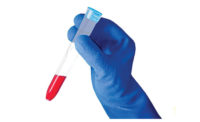In the United States, about 82,000 chemicals are available to use, often in the workplace. Since little is known about the harmful effects of these chemicals—either alone, or combination—research is needed to determine safe chemical exposure levels for workers. Identifying early changes, or biomarkers, that occur in the body after exposure but before disease develops could help identify workers who are at risk.
In a new paper, National Institute for Occupational Safety and Health (NIOSH) investigators review current studies of biomarkers of early effects in risk assessment. We asked co-author and NIOSH science officer Gayle DeBord to explain the findings.
Q: What did you learn from this review?
A: Two scientific approaches to studying early biological effects offer promise for the future of risk assessment. These approaches are systems biology, which provides information from multiple cellular pathways in concert, and computational toxicology, which combines this information in computer models to assess risk. Using advanced scientific procedures to identify changes in proteins, genetic materials, and biological pathways, scientists can generate information on the biological effects of chemical exposure. These newer methods can provide greater information more quickly and cheaply than conventional methods can.
Q: What are the challenges facing the field of biomarkers in risk assessment?
A: We still need to overcome several challenges, such as standardization and validation of the biomarkers before routine risk assessments can rely on these methods.
Q: What are the next steps?
A: Preliminary studies in computational toxicology show that early biomarkers could help establish dose and mode of action, but we need more research to validate these biomarkers.
To read the full journal article, go to Systems Biology and Biomarkers of Early Effects for Occupational Exposure Limit Setting.
For more information about chemical safety, visit NIOSH International Chemical Safety Cards.



